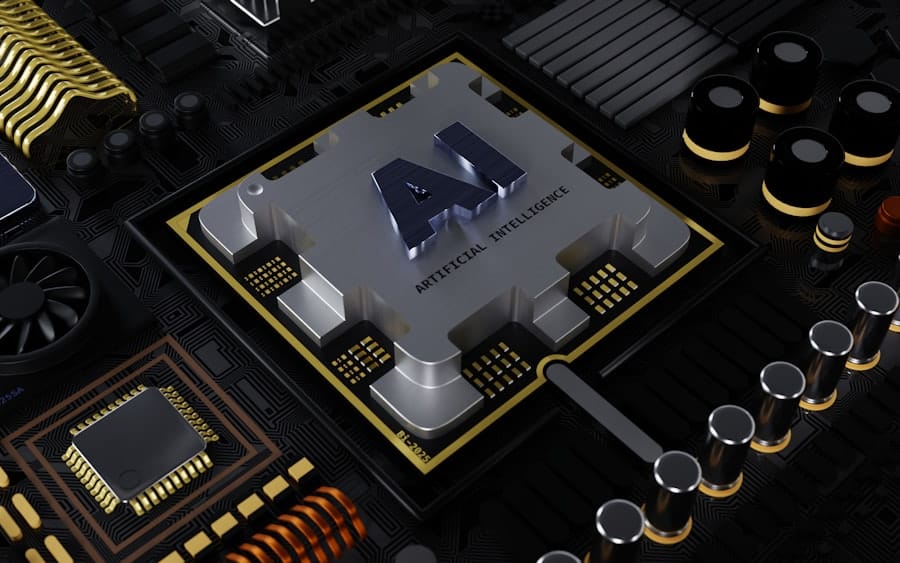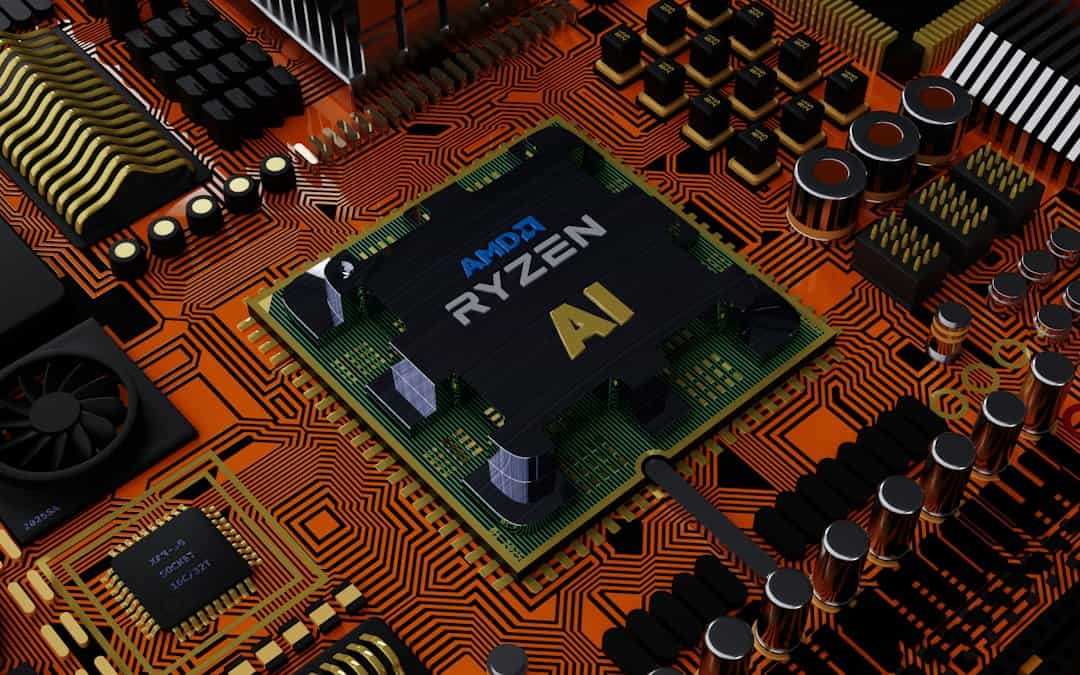Deep learning is a specialized branch of artificial intelligence (AI) that focuses on training computer systems to learn and make decisions using vast amounts of data. This approach is inspired by the human brain’s structure and function, utilizing neural networks that simulate neuronal interactions. In recent years, Deep Learning has garnered significant attention due to its ability to tackle complex problems in areas like image and speech recognition, natural language processing, and autonomous vehicle technology.
Artificial intelligence, in contrast, is a broader field encompassing the development of computer systems capable of performing tasks that typically require human intelligence. These tasks include learning, reasoning, problem-solving, perception, and language comprehension. Deep learning serves as a powerful tool within AI, enabling machines to learn from data and make decisions without explicit programming.
The potential of deep learning and AI to transform various industries is substantial. Sectors such as healthcare, finance, transportation, and entertainment stand to benefit from these technologies. Deep learning algorithms can analyze and interpret large datasets, uncovering patterns and insights that were previously undetectable.
As these technologies continue to advance, it becomes increasingly crucial for professionals across various fields to understand the principles and applications of deep learning and AI.
Key Takeaways
- Deep learning and AI are revolutionizing various industries by enabling machines to learn from data and make intelligent decisions.
- Neural networks and deep learning models are inspired by the human brain and are capable of learning and making predictions from large amounts of data.
- Python and TensorFlow are popular tools for implementing deep learning algorithms, providing a wide range of functionalities for building and training neural networks.
- Convolutional Neural Networks (CNNs) and Recurrent Neural Networks (RNNs) are advanced deep learning models that are widely used in computer vision and natural language processing tasks.
- Deep learning has numerous applications in AI, including natural language processing for text analysis and computer vision for image recognition and object detection.
Understanding Neural Networks and Deep Learning Models
Neural networks are at the core of deep learning models. They are composed of interconnected nodes, or “neurons,” that work together to process and analyze data. Each neuron receives input, performs a calculation using weights and biases, and then passes the output to the next layer of neurons.
Deep learning models consist of multiple layers of neurons, allowing them to learn increasingly complex representations of the data. There are several types of neural networks used in deep learning, including feedforward neural networks, convolutional neural networks (CNNs), and recurrent neural networks (RNNs). Feedforward neural networks are the simplest form of neural network, with data flowing in one direction from input to output.
CNNs are commonly used for image recognition tasks, as they are able to automatically learn features from raw pixel data. RNNs, on the other hand, are designed to handle sequential data and are often used in tasks such as speech recognition and language modeling. Understanding the structure and function of neural networks is essential for building and training deep learning models.
By manipulating the connections between neurons and adjusting the weights and biases, it is possible to teach a neural network to recognize patterns and make predictions based on input data.
Implementing Deep Learning Algorithms with Python and TensorFlow

Python has become the programming language of choice for many deep learning practitioners due to its simplicity and versatility. It offers a wide range of libraries and frameworks that make it easy to implement deep learning algorithms, including TensorFlow, Keras, and PyTorch. TensorFlow, developed by Google, is one of the most popular deep learning frameworks, providing tools for building and training neural networks.
To implement deep learning algorithms with Python and TensorFlow, one must first understand the basics of Python programming and data manipulation. Then, they can begin working with TensorFlow to create and train neural networks. TensorFlow provides high-level APIs such as Keras, which simplifies the process of building deep learning models by providing pre-built layers and modules.
Once a deep learning model has been built, it can be trained using labeled data to adjust the weights and biases of the neurons. This process involves feeding the input data through the network, comparing the output to the expected result, and using optimization algorithms such as gradient descent to minimize the error. With Python and TensorFlow, it is possible to implement a wide range of deep learning algorithms, from simple feedforward networks to complex CNNs and RNNs.
Advanced Topics in Deep Learning: Convolutional Neural Networks and Recurrent Neural Networks
| Metrics | Convolutional Neural Networks (CNN) | Recurrent Neural Networks (RNN) |
|---|---|---|
| Architecture | Designed for image recognition and processing | Suitable for sequential data like text and time series |
| Memory | Less memory intensive due to weight sharing | More memory intensive due to recurrent connections |
| Training | Training on large datasets can be time-consuming | Training can be slower due to sequential processing |
| Applications | Used in image classification, object detection, and segmentation | Applied in natural language processing, speech recognition, and time series analysis |
Convolutional neural networks (CNNs) are a type of deep learning model that is particularly well-suited for image recognition tasks. They are designed to automatically learn features from raw pixel data by using convolutional layers, pooling layers, and fully connected layers. CNNs have been used in a wide range of applications, including object detection, facial recognition, and medical image analysis.
Recurrent neural networks (RNNs) are another important class of deep learning models that are designed to handle sequential data. Unlike feedforward neural networks, RNNs have connections that form loops, allowing them to maintain a state or memory of previous inputs. This makes them well-suited for tasks such as speech recognition, language translation, and time series prediction.
Both CNNs and RNNs have advanced variations that have been developed to address specific challenges in deep learning. For example, long short-term memory (LSTM) networks are a type of RNN that is able to learn long-term dependencies in sequential data. Similarly, residual networks (ResNets) are a type of CNN that use skip connections to address the problem of vanishing gradients in very deep networks.
Understanding these advanced topics in deep learning is essential for practitioners who want to tackle complex problems in areas such as computer vision, natural language processing, and time series analysis. By leveraging the capabilities of CNNs and RNNs, it is possible to build sophisticated deep learning models that can learn from and make predictions based on complex data.
Applications of Deep Learning in AI: Natural Language Processing and Computer Vision
Deep learning has found numerous applications in artificial intelligence, with two prominent areas being natural language processing (NLP) and computer vision. In NLP, deep learning models are used to analyze and understand human language, enabling machines to perform tasks such as language translation, sentiment analysis, and text generation. NLP has applications in virtual assistants, chatbots, search engines, and automated content generation.
Computer vision is another area where deep learning has made significant advancements. Deep learning models have been able to achieve state-of-the-art performance in tasks such as object detection, image classification, and image generation. This has led to applications in autonomous vehicles, medical imaging, surveillance systems, and augmented reality.
The ability of deep learning models to learn from large amounts of data has enabled them to outperform traditional machine learning algorithms in these domains. By leveraging techniques such as CNNs for computer vision tasks and RNNs for NLP tasks, it is possible to build highly accurate and efficient AI systems that can understand and interpret complex visual and textual information.
Real-world Projects and Case Studies in Deep Learning

There are numerous real-world projects and case studies that demonstrate the power of deep learning in solving complex problems. For example, in healthcare, deep learning models have been used to analyze medical images for early detection of diseases such as cancer and diabetic retinopathy. In finance, deep learning algorithms have been applied to predict stock prices and detect fraudulent transactions.
In the field of autonomous driving, deep learning models have been used to interpret sensor data from cameras and lidar systems to enable vehicles to navigate safely through complex environments. In entertainment, deep learning has been used to create realistic computer-generated imagery for movies and video games. These real-world projects demonstrate the wide-ranging impact of deep learning across various industries.
By leveraging the capabilities of neural networks and advanced deep learning algorithms, it is possible to solve complex problems that were previously considered unsolvable.
Mastering Deep Learning with Coursera: Tips and Resources for Success
Coursera offers a wide range of courses and specializations that cover various aspects of deep learning and AI. For those looking to master deep learning with Coursera, there are several tips and resources that can help ensure success. Firstly, it is important to start with foundational courses that cover the basics of machine learning and neural networks before moving on to more advanced topics.
Coursera offers courses from top universities and industry experts that provide hands-on experience with implementing deep learning algorithms using popular frameworks such as TensorFlow and Keras. It is important to take advantage of these practical exercises to gain a deeper understanding of how deep learning models work. In addition to courses, Coursera also offers resources such as forums and community groups where learners can connect with peers and experts in the field.
Engaging with these communities can provide valuable insights and support throughout the learning journey. Finally, it is important to stay updated with the latest advancements in deep learning by following industry news, research papers, and conferences. Coursera offers access to cutting-edge research through partnerships with leading institutions in the field.
In conclusion, mastering deep learning with Coursera requires dedication, practice, and a commitment to staying informed about the latest developments in the field. By leveraging the resources available on Coursera and engaging with the community, learners can gain the knowledge and skills needed to excel in the exciting field of deep learning and AI.
If you’re interested in exploring the intersection of technology and culture, you may want to check out this article on community and culture in the metaverse. It delves into the importance of diversity and inclusion in virtual spaces, which is a relevant topic for those studying deep learning on platforms like Coursera. Understanding the social implications of technology is crucial for creating ethical and inclusive AI systems.
FAQs
What is Coursera Deep Learning?
Coursera Deep Learning is a series of online courses offered by Coursera in partnership with leading universities and institutions, such as Stanford University and the University of Toronto. These courses cover various aspects of deep learning, including neural networks, machine learning, and artificial intelligence.
What can I learn from Coursera Deep Learning?
Through Coursera Deep Learning, participants can learn about the fundamentals of deep learning, including neural networks, convolutional networks, sequence models, and more. The courses also cover practical applications of deep learning in areas such as computer vision, natural language processing, and speech recognition.
Who is Coursera Deep Learning for?
Coursera Deep Learning is designed for anyone interested in gaining a comprehensive understanding of deep learning, including students, professionals, and researchers. It is suitable for individuals with a background in mathematics, programming, and computer science.
How long does it take to complete Coursera Deep Learning?
The duration of Coursera Deep Learning varies depending on the specific courses and the pace at which participants choose to study. Typically, each course in the series may take several weeks to complete, with a recommended commitment of a few hours per week.
Are there any prerequisites for Coursera Deep Learning?
While there are no strict prerequisites for Coursera Deep Learning, participants are encouraged to have a basic understanding of mathematics, programming, and machine learning concepts. Some courses may also require familiarity with specific programming languages, such as Python.
What credentials can I earn from Coursera Deep Learning?
Upon successful completion of the Coursera Deep Learning courses, participants can earn certificates of achievement or specialization certificates from the respective universities and institutions offering the courses. These certificates can be valuable for showcasing expertise in deep learning to potential employers or academic institutions.











Leave a Reply